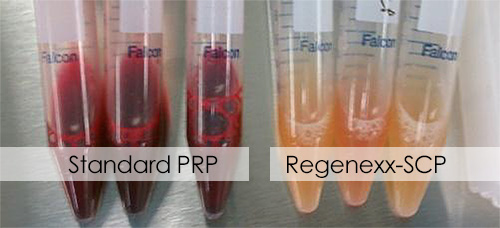We occasionally share information on the blog about PRP treatment and feature those who’ve had success with it. You’ve likely even read about it in the news as professional athletes and others who are struggling with certain injuries often undergo PRP treatment. Perhaps even a friend or family member has talked about their PRP treatment. While it may be hitting your radar from time to time, you may still be wondering, What exactly is a PRP treatment, and does the type of PRP treatment you get matter? Today, we’re going to answer these questions.
Let’s begin by discussing where PRP comes from and how it’s made.
What Is PRP?
Platelet-rich plasma (PRP) is prepared by concentrating the platelets that are in the blood. Platelets are cell fragments that are constantly circulating in the blood. If you experience an injury, such as an open wound, it’s the platelets that jump to action to clot the blood and seal the wound so we don’t bleed to death, so they have a big job. At the same time, platelets contain growth factors that are also released. These growth factors nudge the local stem cells and other healing cells to start repairing the injury. So a PRP treatment harnesses the power of the growth factors, using them to “wake up” those local stem cells.
How, then, do we prepare PRP? First, we do a simple blood draw, collecting the patient’s own whole blood from an arm vein for example. This blood is then centrifuged by a lab technician in our lab, to separate the serum containing the platelets from the blood. Most clinics do this step using an automated centrifuge; however, because we do this in our lab, we are able to prepare superior concentrations of PRP. See more on this below:
Let’s dig a bit deeper into the concentration methods used to prepare PRP.
PRP Concentrated in a Lab vs. in an Automated Centrifuge
As mentioned before, most clinics concentrate PRP in a simple push-button automated centrifuge. They draw the blood, put it in the machine, and push a button. That’s it. The machine spins it down to separate it, and when it’s done, they get what they get: about a 3–5X (three to five times over the baseline concentration of platelets) concentration of platelets. While this is a super-simple method for the clinic, since all they have to do is push the on button, this approach literally produces a “one size fits all” PRP. And, unfortunately, even something as simple as how much water the patient has had to drink cannot be accounted for in these automated systems, and this can affect the concentrated sample.
An advanced lab in the clinic can often accomplish a number of things that an automated centrifuge machine cannot. We can adjust the processing based on the unique patient sample. For example, accounting for a lack of hydration by the patient. We can also, as clearly stated above, provide much higher concentrations of platelets. Last, but certainly not least, we can customize the type and concentration of PRP based on the specific patient condition. For example, for an older patient who’s local stem cells may need a bit more of a boost, we can customize the sample to higher concentrations to meet that patient’s needs.
What Does a PRP Preparation Look Like?
If you could hold PRP samples side by side, one produced by an automated bedside centrifuge and one produced in our lab (see right), the first and most obvious thing you will notice is the color. The red PRP produced by the machine contains large amounts of red and white blood cells. We know that PRP treatments using red PRP creates more inflammatory reactions. When produced in the lab, this can create an amber PRP without red or white blood cells. Our own lab research has clearly shown that stem cells that are exposed to amber PRP respond much better than those exposed to red PRP.
What We Can Treat with PRP?
At the Centeno-Schultz Clinic, we can treat a variety of musculoskeletal conditions with PRP, including degenerated tendons, small ligament or tendon tears, and even some mild arthritis. The standard automated concentrations of red PRP aren’t part of our process as each of our patients are individual and have unique needs; therefore, we customize our PRP concentrations in our lab for each patient.
In addition we often treat patients who have multiple issues that need to be addressed and being able to customize PRP treatments is imperative. For example, for a patient needing low-back, tendon, and knee treatments, we might use a lower 7X concentration of amber PRP in the tendon, a 20X concentration of PRP in the joint, and our fourth-generation platelet lysate (growth factors removed from the PRP) to treat the areas around the irritated back nerves. We wouldn’t be able to perform customized PRP treatments such as these if all we had to do was push an on button to concentrate the platelets.
We hope this gives you a better understanding of PRP treatment and why not all treatments are created equal. The type of PRP treatment you get really does matter, and very few clinics, outside of the Regenexx Network, which we are a part of, prepare PRP in a lab that can customize the PRP treatment to the patient.

